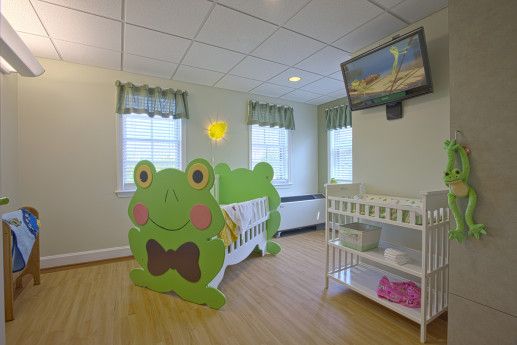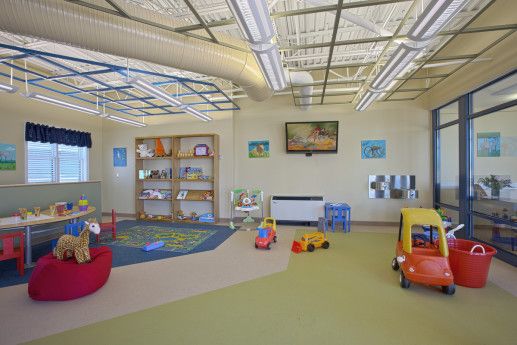Crescent Cove Panel Comments:
Janet Will, RN, MS
Pediatric In-Patient Program Director, Gilchrist Hospice Care
Hunt Valley, Maryland
Thank you for the opportunity to be here and share our Dr. Bob’s Place experience. Thank you parents and families, thank you Katie and your Crescent Cove Team for the opportunity to discuss change for children and families.
Dr Bob’s Place, is located in downtown Baltimore Maryland and is a 10 bed facility designed to provide end-of-life care to children and families in a home-away-from home like environment. The program was founded under the mission of an adult hospice program who felt children were an underserved population and not only should they have access to the same care as adults, but they should not be kept in hospital intensive care settings if a home-away-from home option could be created for end-of-life care. I thought it might be helpful for today to call our programs and houses “Like Houses”. Ultimately each of our program designs may vary based on the needs of each specific region of the country and each of our sets of state regulations.
At Dr. Bob’s Place, we provided care to 25 children in our inpatient setting during the 2 and 1/2 years we were operational. We found ourselves unable to sustain the program financially or to clinically fill 10 pediatric beds. But, we learned a great deal.
- There are an increasing number of children with complex chronic conditions across this country who remain hospitalized for long periods of time due to the complex nature of their conditions and who require technology to support their lives. For every child, there is a family who must care for them, and they have complex needs too.
- While many of these children meet criteria for palliative care services, not all need hospice or end-of-life care, so, how you are licensed as a Like House will determine the sustainability of your referral base and reimbursement processes. A hospice license is not always sufficient to meet the broader types of needs for children and families.
- Palliative care is and should remain a broad based set of services offered to families when children have life-threatening illnesses. Numerous pediatric academic centers have comprehensive programs, others have newly merging programs; and, not all hospital based pediatric palliative care programs include community based palliative care within the scope of their programs. Billing, reimbursement structures, and funding remain challenging inside or outside hospital settings, especially for physicians.
- Sometimes during a child’s inpatient hospice stay, the level of hospice care needed does not support the level of care required to bill at the inpatient hospice reimbursement rate, so their remains a balancing act between regulations vs. the defined clinical needs of the child and family vs. what we can or cannot bill for.
- We have learned to navigate the Concurrent Care Act for Children which helps to provide curative and end-of life care for children with complex needs including end-of-life care. But, we have also learned that families need the supports available in hospice programs earlier than the regulations allow or can maintain. For a family whose child improves or is not declining, where do they find the caring and clinical coordination efforts and supports commonly offered by a hospice program?
- Of the children we cared for, over half were infants. Infants are the most underserved population nationally by hospice programs because of how fragile and tiny they are and the level of care needed to offer appropriate medical and nursing care especially in home settings. Not all hospital technology or clinical interventions for comfort can be safely provided at home. Dr. Bob’s Place demonstrated that parents need additional attention and support when the child is an infant. Hospital based practitioners may not know to consider inviting pediatric hospice professionals into the hospital setting as an adjunct support to families. It requires repeated education to teach hospital staff that hospice services can be another layer of support. In instances when a Like House is an option, staffs need education to understand how a community inpatient setting is a middle option for families.
- While most parents tell us they want to be home with their child, sometimes they need more time to learn care, sometimes they are overwhelmed especially if the child is a newborn, sometimes they are tired, and they are often trying to integrate intense emotions with the elements of learning practical care and medical coordination, all while managing other family responsibilities — this simply takes time. Parents have shared how frightened they are about the possibility of making a mistake in delivering the multiple aspects of their child’s care. They report these activities distract them from simply being Mom and Dad. And they feel pulled in two directions at the same time – being the direct caregiver and just loving their child.
- Staff that care for medically fragile children and families need to be mentored and trained. They need self-care strategies to continue this work.
- Staffing patterns for children with technology or at end-of-life do not match the staffing patterns for adults. Programs that care for children and fall under adult models of design, are always more costly. That creates a large financial burden for hospices willing to care for children. Currently hospices face dwindling reimbursement structures as we integrate changes within our larger health care systems. Nurses in particular need special training and experience to deliver care to children with all types of technology. That specialized training and the need for lower staff-patient ratios for all clinical roles increases the budget.
- Parents of children with complex chronic conditions caring for their children at home reach a threshold of exhaustion. Hospice regulations allow for 5 days of respite periodically. Non-hospice eligible children can have access to respite in the home, for short periods of time, usually a few hours at a time based on what a family searches out for themselves, with little or no reimbursement support. Some states are better than others with respite but by and large, respite is a missing element of care for these families. Hospice programs generally are not able to offer respite services to non-hospice eligible patients. Respite care is an integral standard for good pediatric palliative care.
- At Dr. Bob’s Place, we knew were providing good care, more costly than an adult hospice. What we hope to re- create is a program that has a flexible care model with:
- Transitional care, respite care, and end-of-life care
- Current conversations continue with that goal in mind.
In summary, we learned that program success requires coordination efforts in 5 areas:
- The need to define clinical parameters to safely discharge a child from the hospital to a community setting with adequate levels of care provided by well-trained pediatric staff
- Regulations that currently exist are not adequate to provide a new model of care for children with life-limiting illnesses in community settings. Current regulations are cumbersome as they cross numerous regulatory agencies and any program that is designed under current definitions of care become cost prohibitive or unwieldy to manage.
- Redesigning regulatory and reimbursement systems requires legislation and/or large health system changes and the process is lengthy. California, Illinois, and New Jersey have done this already. We can learn from their efforts.
- Education is needed for payers, case managers, and hospital based pediatric providers to understand what types of care can be delivered safely in community Like House settings so Like Houses are seen as both supportive and a cost savings mechanism to the larger view of managing this population of children.
- Coordinating utilization and cost savings data to demonstrate what Like Houses can offer will support our efforts.
- And, creating Like Houses takes more than a village.
The most important news is that Like Houses would allow us to care for children and families with sustainability and heart, with clinical excellence and caring.
Children’s Hospice near Maryland General Hospital Dr. Bob’s Place, The Joseph Richey House, interior and exterior building photography.



